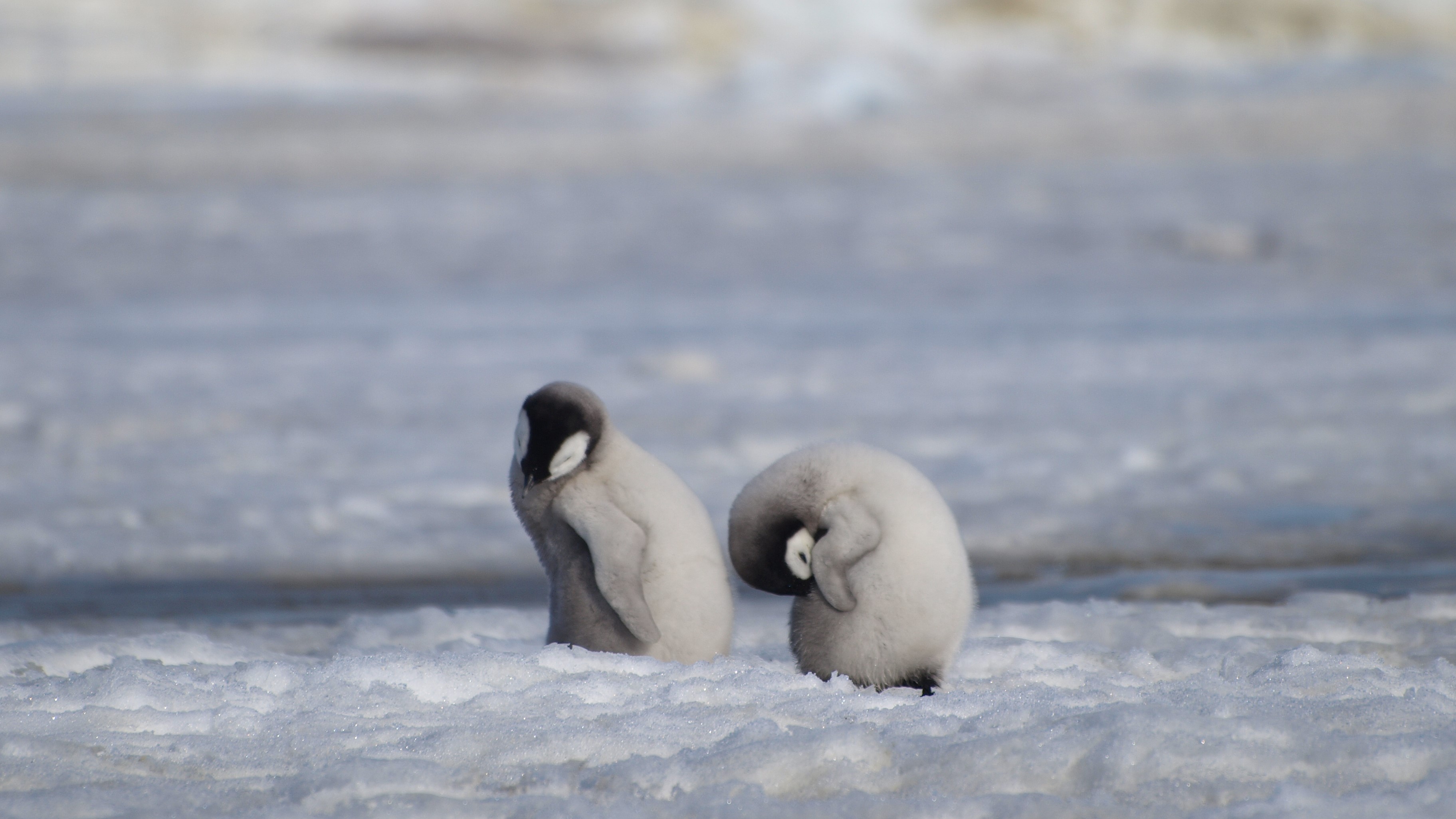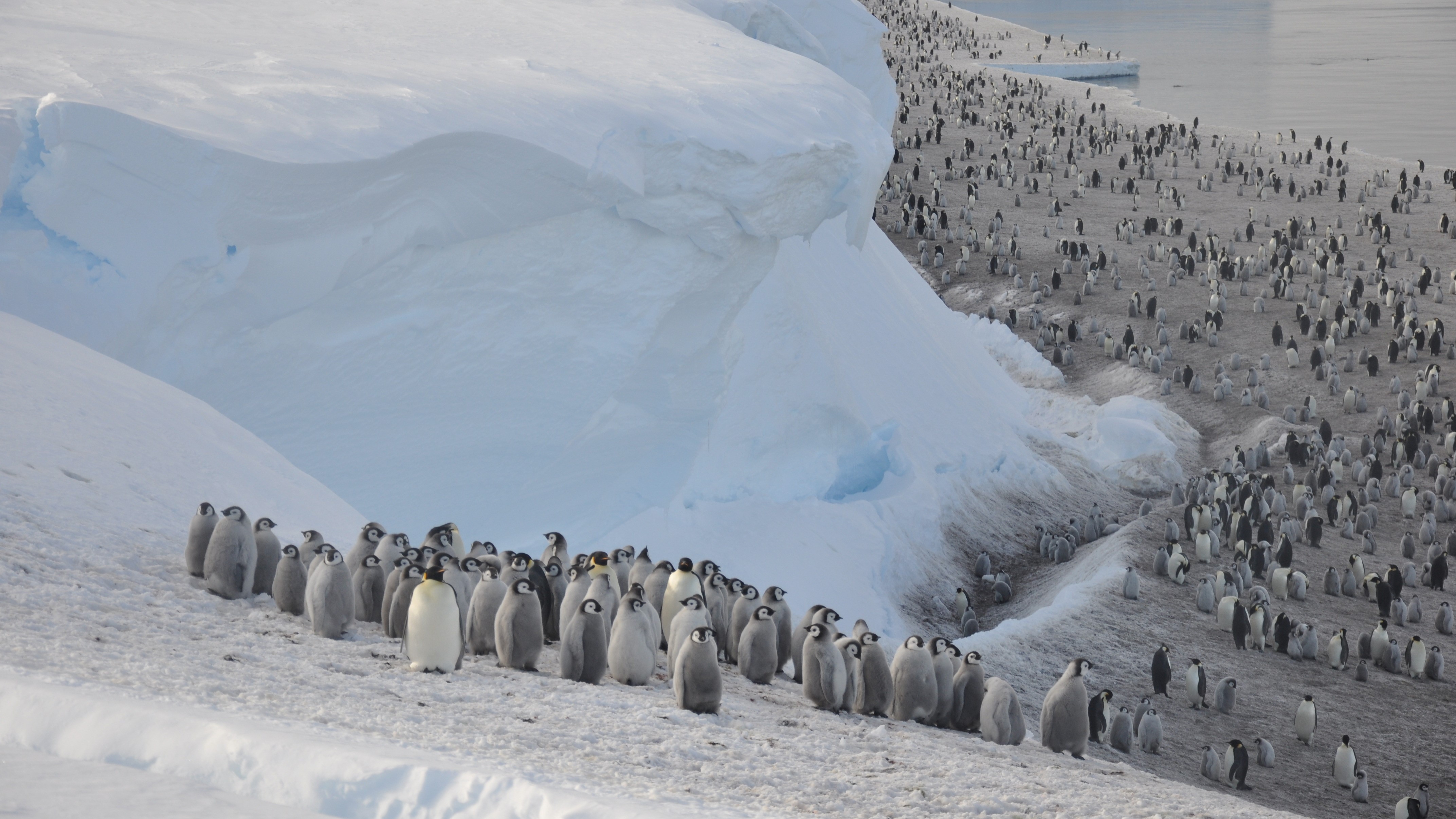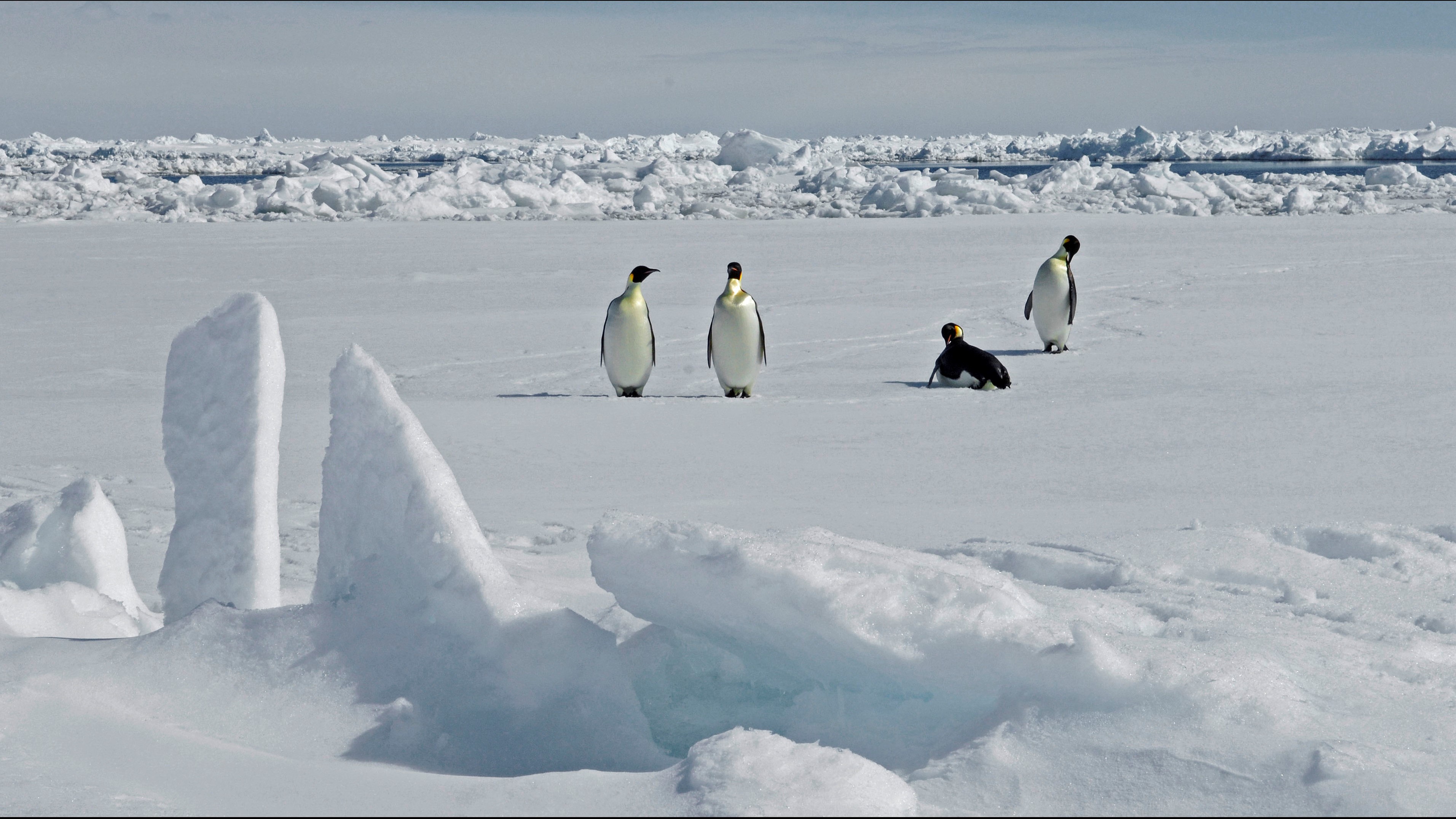Mass die-off strikes endangered emperor penguin chicks across 4 of 5 West Antarctica colonies
Out of five known emperor penguin colonies in the Bellingshausen Sea region of western Antarctica, four have failed to breed this year as chicks likely drowned in the melting sea ice.

A massive die-off has hit emperor penguin chicks from four colonies in West Antarctica due to record-smashing low sea ice this year, a new study finds.
The finding supports predictions that 98% of all emperor penguin colonies could become "quasi-extinct" by 2100, meaning the number of surviving penguins may be too small to maintain viable populations.
"We have never seen emperor penguins fail to breed, at this scale, in a single season," study lead author Peter Fretwell, a geographic information scientist with the British Antarctic Survey, said in a statement. "The loss of sea ice in this region during the Antarctic summer made it very unlikely that displaced chicks would survive."
Emperor penguins (Aptenodytes forsteri), the tallest and heaviest penguin living today, need stable sea ice that is firmly frozen to the shore to survive and breed. They mate and lay their eggs during the Antarctic winter, between May and June, and the hatchlings emerge after an incubation period of 65 days. Chicks remain covered in fine down until November, when they start to fledge and grow waterproof feathers. Before then, chicks are highly reliant on their parents and require just the right amount of sea ice to survive.
"If there's too much sea ice, trips to bring food from the ocean become long and arduous [for parents], and their chicks may starve," Stéphanie Jenouvrier, a seabird ecologist and associate scientist at the Woods Hole Oceanographic Institution in Massachusetts, wrote in The Conversation. "With too little sea ice, the chicks are at risk of drowning."

Researchers monitor emperor penguins using their droppings, or guano, which leaves brown stains on the frosty landscape that can be seen from space. Over the past 14 years, satellite images have revealed evidence of five relatively small colonies that return every year to the same locations in the Bellingshausen Sea region of western Antarctica to breed.
Sign up for the Live Science daily newsletter now
Get the world’s most fascinating discoveries delivered straight to your inbox.
In a study published Thursday (Aug. 24) in the journal Communications Earth and Environment, researchers examined satellite images from this region and found that four of these five colonies probably lost all their chicks this year due to dwindling sea ice.
The last two years have seen the lowest levels of sea ice since satellite monitoring began 45 years ago. Researchers recorded extreme losses in the central and eastern Bellingshausen Sea, where sea ice completely melted away in November 2022, according to the study. Another record low was set in June, when Antarctic sea ice should have been growing, spelling the possibility of a long-term decline.

If this pattern persists, the scientists warned in the study, there could be "grave consequences" for emperor penguins, which are already listed as threatened on the U.S. endangered species list.
This is the first time on record that regional sea ice loss has caused a mass die-out of the iconic penguins' chicks. "Our findings show a clear link between negative sea ice anomalies and emperor penguin breeding failures that may represent a snapshot of a future, warming Antarctica," the researchers wrote.
While sea ice levels in Antarctica are known to fluctuate with atmospheric and oceanic changes, such as those triggered this year by El Niño, climate change could be to blame for dramatic losses in recent years.
"Tumbling sea ice records and warming of the subsurface Southern Ocean point strongly to human-induced global warming exacerbating these extremes," Caroline Holmes, a polar climate scientist with the British Antarctic Survey who was not involved in the study, said in the statement.
Emperor penguins respond to localized sea ice loss by switching to more stable breeding sites the following year, according to the study. But this strategy will no longer be sustainable if large swathes of their frosty habitat melt away in the coming decades, the researchers said.

Sascha is a U.K.-based staff writer at Live Science. She holds a bachelor’s degree in biology from the University of Southampton in England and a master’s degree in science communication from Imperial College London. Her work has appeared in The Guardian and the health website Zoe. Besides writing, she enjoys playing tennis, bread-making and browsing second-hand shops for hidden gems.










